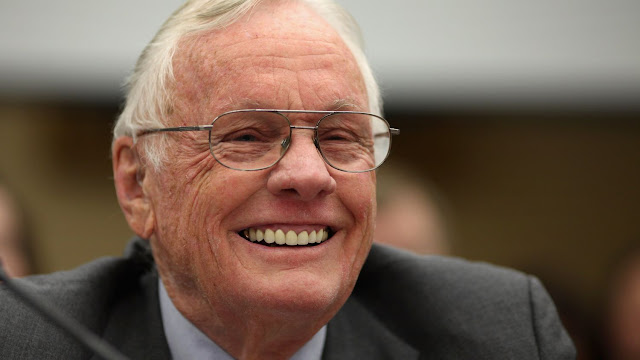Neil Armstrong: a spatial legacy
Ten years ago, Neil Armstrong passed away at the age of 82. More than 50 years after his steps on the Moon, his name continues to resonate with space conquest. The first man to walk on the Moon continues to inspire a new generation of astronauts who are now looking to follow in his footsteps on the Moon.
 |
| Neil Armstrong (credits:NASA) |
Neil Armstrong: a life in space
The first man to walk on the moon was born in Wapakoneta, Ohio, on August 5, 1930. He began his career at NASA in Ohio.
After serving as a naval aviator from 1949 to 1952, Armstrong joined the National Advisory Committee on Aeronautics (NACA) in 1955. His first assignment was at the NACA Lewis Research Center (now NASA Glenn) in Cleveland. Over the next 17 years, he served as an engineer, test pilot, astronaut, and administrator for NACA and its successor agency, the National Aeronautics and Space Administration (NASA).
As a research pilot at NASA's Flight Research Center in Edwards, California, he was a project pilot on many pioneering high-speed aircraft, including the famous 4,000 mph X-15. He flew more than 200 different aircraft models, including jets, rockets, helicopters and gliders.
Armstrong achieved astronaut status in 1962. He was assigned as the command pilot for the Gemini 8 mission. Gemini 8 was launched on March 16, 1966, and Armstrong achieved the first successful docking of two vehicles in space.
As commander of the Apollo 11 spacecraft, the first manned lunar landing mission, Armstrong had the distinction of being the first man to land a craft on the moon and the first to walk on its surface.
After Apollo 11
Armstrong later served as Deputy Associate Administrator for Aeronautics at NASA Headquarters in Washington, D.C. In this position, he was responsible for coordinating and managing all of NASA's aeronautics-related research and technology work.
He was a professor of aerospace engineering at the University of Cincinnati from 1971 to 1979. From 1982 to 1992, Mr. Armstrong was president of Computing Technologies for Aviation, Inc. in Charlottesville, Va.
He holds a bachelor's degree in aeronautical engineering from Purdue University and a master's degree in aerospace engineering from the University of Southern California. He holds honorary doctorates from several universities.
Armstrong was a member of the Society of Experimental Test Pilots and the Royal Aeronautical Society; an honorary member of the American Institute of Aeronautics and Astronautics, and the International Astronautical Federation.
He was also a member of the National Academy of Engineering and the Academy of the Kingdom of Morocco. He was a member of the National Space Commission (1985-86), Vice Chairman of the Presidential Commission on the Space Shuttle Challenger Accident (1986), and Chairman of the Presidential Advisory Committee for the Peace Corps (1971-73).
Internationally Recognized
Armstrong has been decorated by 17 countries. He has received many special honors, including the Presidential Medal of Freedom; the Congressional Gold Medal; the Congressional Space Medal of Honor; the Explorers Club Medal; the Robert H. Goddard Memorial Trophy; the Academy of Sciences Trophy; the Academy of Sciences Trophy. Goddard Memorial Trophy; the NASA Distinguished Service Medal; the Harmon International Aviation Trophy; the Royal Geographic Society's Gold Medal; the Federation Aeronautique Internationale's Gold Space Medal; the American Astronautical Society Flight Achievement Award; the Robert J. Collier Trophy; the AIAA Astronautics Award; the Octave Chanute Award; and the John J. Montgomery Award.
 |
| Neil Armstrong died in 2012. |
Posterity
The International Astronomical Union has named an impact crater after him as well as an asteroid. A museum bears his name: the Neil Armstrong Air and Space Museum.
Other tributes have been paid to the astronaut through films and books. Another work has marked the minds in 2018: First Man: The First Man on the Moon.
NASA has the Neil A. Armstrong Flight Research Center.
An inspiration
Many viewers gathered in front of their TV sets in 1969 to watch Apollo 11 on the Moon and the first steps on the Moon. Canadian astronaut Chris Hadfield is part of that generation inspired by Neil Armstrong.
"It was huge. It was everything that would absorb the dreams of any nine-year old kid around the world – including this one growing up in Canada," Hadfield said in an interview with CBC News Network's Power and Politics.
 |
| Apollo 11 famous picture |
"To see that successfully carried out against what seemed like impossible odds for the first time in human history, for us to leave this Earth and go to another planet not because we had to, but because we just barely could, was hugely inspiring."
"Despite the historic words that Neil said on the moon — of 'one small step for man' and one giant leap for the rest of us, for all mankind — he was not a man of a lot of words. He was a man of quiet accomplishment, a person who spent decades giving himself the skills and the capability to be able to do some new and extremely hard things and do them well," he said.
"I have taken that to heart my whole life, to really honour the necessity for personal excellence and to make the most of myself. That's what I learned from Neil Armstrong. That's what I think about when I think of having met him and think about what his legacy is. And it's what continues to inspire me today."



Comments
Post a Comment